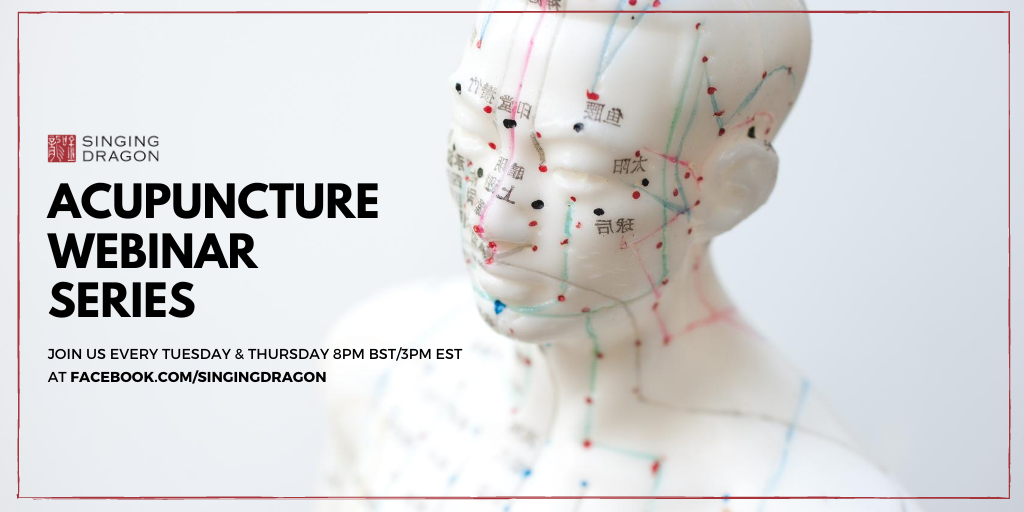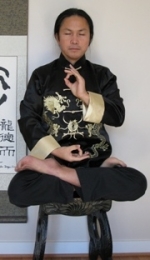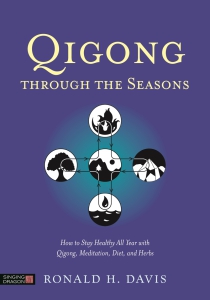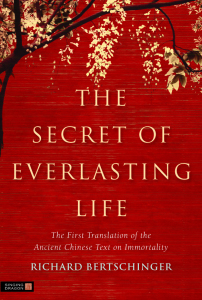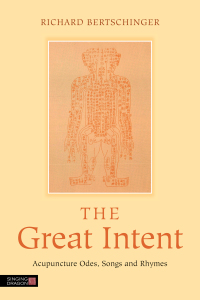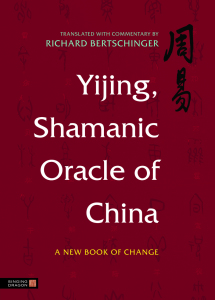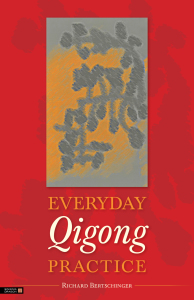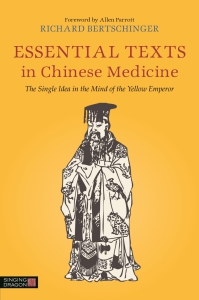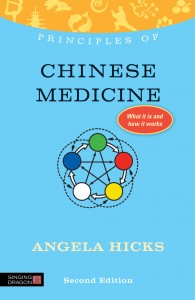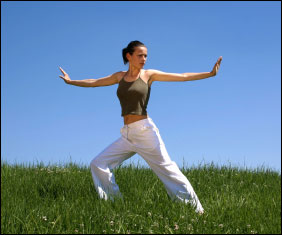
Greetings from sunny Stockholm! Unlike the record warm winter we had last year, we are finally experiencing some snow and freezing temperatures this winter. My wife Karin and I are enjoying this winter-Qi – the greatest source for rejuvenating all new life energy. We will continue to take advantage of the winter feeling and maintain our focus on our annual winter personal retreat. I am sending this seasonal greeting a little early this year because I would like to share some special cultivation ideas for the coming new energetic year with you all.
Utilize the rhythm of Nature
According to ZhouYiCanTongQi 周易參同契, one of the most important Daoist internal alchemy classics, the rhythm of nature has great influence on human beings, and it is therefore important to understand the rhythms of nature and know how to cultivate with the changing rhythms.
By doing so, you will optimize your potential for inner transformation and for deep healing to occur.
Three New Years!
There will be three important shifts in the rhythm of Qi as we move from the current JiaWu 甲午 Year to the coming YiWei 乙未 Year:
- Cosmological New Year – Alchemical Qi
- Animal New Year – Yang (Solar) Qi
- Chinese New Year – Yin (Lunar) Qi
Cosmological New Year – Alchemical Qi
This YiWei 乙未 Cosmological Year will start January 20, 2015
The Heavenly Stem Yi 乙 represents Yin Wood and the Earthly Branch Wei 未 represents the Earth and carries the Goat as its spiritual animal. According to Chinese cosmology, I expect that the coming year’s climatic pattern to be influenced by Revenge Fire, Damp Earth, and Cold Water energies.
This means that I predict more rainstorms than average this year, with hail in the summer and snow storms in the winter.
I also expect that there will be strong windstorms in the coming months, especially on west coast area of your region.
Animal New Year – Yang (Solar) Qi
Spring season will begin on February 4, 2015
The next animal sign begins on LiChun 立春, which marks the beginning of spring. LiChun is one of the 24 15-day segments in the annual solar cycle. According to WanNianLi 萬年曆, the Chinese Ten-Thousand Year Calender, spring season will begin on February 4, 2015.
In my tradition, the coming of spring correlates with the start of a new annual animal sign – and this year it will be YiWei, the Year of Yin Wood Goat. In Chinese astrology, one of the four pillars that make up the basic chart is the animal which correlates to the Solar year of birth.
For example, all babies who are born between February 4, 2015-February 4, 2016 will have the Yin Wood Goat as their yearly animal sign.
Whether you have a goat in your chart or not, we will all be affected by the Goat energy this year.
Here is a brief synopsis of the symbolism of the Goat, as extracted from my book The 12 Chinese Animals:
“Goats give you gentle and peaceful feelings when they chew grass with a slow, grinding motion. Yet they move with great speed and agility when navigating their way through rough, rocky, mountainous areas. They have strong horns and are always ready to defeat their enemies.
Goat is the eighth animal symbol in the 12 Chinese Animals System.
We use Wei 未 to represent the Goat symbol in the 12 Earthly Branches.
Wei is a symbol for the 13:00–14:59 time of day, and for the sixth month in the Chinese Lunar-Solar calendar (which is approximately July 7 to August 8 in the Gregorian solar calendar).
Wei represents the napping time of day and the third summer month when nature is in its ripest season. It is a time or a place where Yang energy (life energy) continues its decline and when the life cycle becomes more mellow. We use the tidal hexagram Dun 遁 ䷠ to symbolize the Goat.”
Chinese (Lunar) New Year – Yin (Lunar) Qi
This year we will celebrate the New Year on February 19, 2015
The Chinese New Year falls on the second new moon after the Winter solstice each year. This year we will celebrate the New Year on February 19, 2015. In China, we also call the New Year ChunJie 春節, or Spring Festival.
The Spring Festival is the most important and longest holiday of the year in China, the one in which we all prioritize spending time with family and friends. Traditionally, the celebration begins new year’s eve and lasts for almost an entire month.
YiWei and your Health
While the combination of YiWei energies will be good for those of you who need support from the Wood elements, it will also possibly cause added difficulties for those of you who have weak lung Qi, poor digestive function, and/or a lower sexual drive.
Some people will suffer more pain in their joints and tendons over the next couple of months.
I will go into more detail about how the seasonal cosmological influences will effect us in my coming seasonal greetings.
YiWei New Years Qigong – Goat Internal Alchemy
As I always emphasise, Qigong practice is a great medicine that will help you maintain balance and a sense of well being in your life.
The special Goat internal alchemy qigong form will be a powerful addition to your daily Qigong practice during this YiWei year.
This year, I will teach the entire 12 Chinese Animals Internal Alchemy form in Anchorage, Alaska on Sunday April 19th. In the workshop, I will explain the form in relation to the twelve Tidal Hexagrams – the spirit of Yijing (I Ching), and cover healing and spiritual transformation applications of the form.
For those of you who will be unable to join us in Anchorage, here is one of the Goat internal alchemy practices for you:
Tidal Hexagram Dun ䷠ Meditation
With a lit candle in front of you, start the meditation by straightening your back and feeling that your body is as stable as a mountain.
Make the Dun mudra by placing each thumb on the tip of the ring finger. The tip of the ring finger is related to the hexagram Dun.
With open and relaxed fingers, place your right mudra on your right knee, palm facing up and raise your left mudra to the level of your left shoulder, palm facing forward.
Adjust your breathing to be slow, smooth, deep, and even.
Feel each breath connect with your spleen, heart, and liver.
Meditate in this position for as long as you can.
At the close of your meditation, please cite this little prayer:
May the Spiritual Lights shine on my unwavering mind
May the Spiritual Lights shine on my unbroken breath
May the Spiritual Lights shine on my unpolluted body
Spring Courses in the US!
Below please find a brief summary of my upcoming courses in the US.
Events with a special early registration price are noted.
QiDao ChaDao: Qigong and the Dao of Tea
Qigong is an ancient technique for healing and inner cultivation. For thousands of years, sages have used the tea ceremony as a gateway to understand the Dao. Please join us for a sampling of special Chinese tea and demonstration of traditional Qigong.
Offerings:
March 13 2015 in Baltimore, MD (click for further details)
April 17 2015 in Anchorage, AK (click for further details)
Dragon Body: The Secret of Daoist Internal Alchemy
In Chinese culture, the dragon represents shifting, changing, invisible, mystery, flexibility, transformation, high spirituality, supernatural, and power.
The Dragon Body practice is a way to express all the characteristics of the dragon in your cultivation practice.
This practice strengthens the vital link between the governing meridian and conception meridian and is one of the most important ZhouTian 周天 (Cosmic Orbit) methods to transform your Qi and nourish your spirit.
Offering:
March 14-15, 2015 in Baltimore, MD (click for further details)
*Please take advantage of the discounted early registration price and register before February 6!
Daoist Internal Alchemy – BaGuaXinJing 八卦心鏡
In this BaGua XinJing (Eight Trigrams Heart-Mirror) training, we will review HunYuanZhuang 混元樁, the fundamental Heart-Mind standing posture, and the XinJing – the eight gentle movements designed to increase physical strength, nourish the joints and balance the mind. This practice represents the very foundation of YiJing (I Ching) philosophy.
Offerings:
March 15, 2015 in Baltimore, MD (click for further details)
April 18, 2015 in Anchorage, AK (click for further details)
*Alaskans, please take advantage of the discounted early registration price and register before February 17!
Daoist Internal Alchemy – ShengXiaoGong 生肖功
The twelve rhythms of nature are represented by ShengXiaoGong (Twelve Animals Qigong), from China’s esoteric Mt. EMei shamanic Qigong lineage, and give us access to the deepest spirit of the Yijing (I Ching).
April 19, 2015 in Anchorage, AK (click for further details)
*Alaskans, please take advantage of the discounted early registration price and register before February 17!
Karin and I are wishing you and your families a healthy and happy year of the Goat!
Master Zhongxian Wu
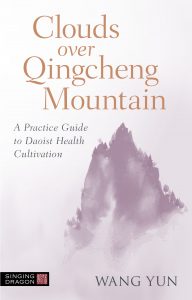 Mount Qingcheng, one of China’s mystical mountains, has been the birth place of discovery, realization and preservation of the recipes that stimulate the deep potential of the human body for generations. Clouds Over Qingcheng Mountain, the follow-up book to Climbing the Steps to Qingcheng Mountain by Daoist master Wang Yun, simplifies the complex practices of Daoism handed down by generations of accomplished Masters – such as posting, breath practice and meditation – and gifts the reader with its most valuable aspects for a modern world.
Mount Qingcheng, one of China’s mystical mountains, has been the birth place of discovery, realization and preservation of the recipes that stimulate the deep potential of the human body for generations. Clouds Over Qingcheng Mountain, the follow-up book to Climbing the Steps to Qingcheng Mountain by Daoist master Wang Yun, simplifies the complex practices of Daoism handed down by generations of accomplished Masters – such as posting, breath practice and meditation – and gifts the reader with its most valuable aspects for a modern world.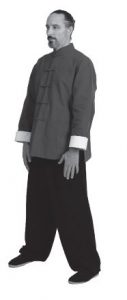 Posting relaxation exercises
Posting relaxation exercises